#triple horns
Text
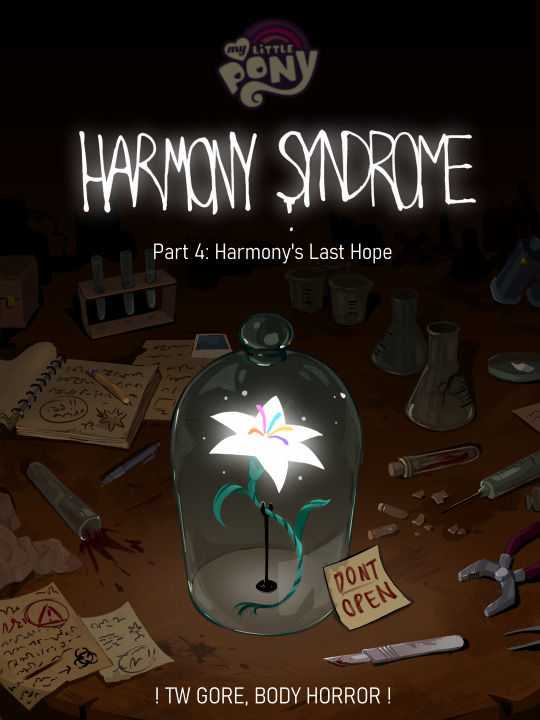

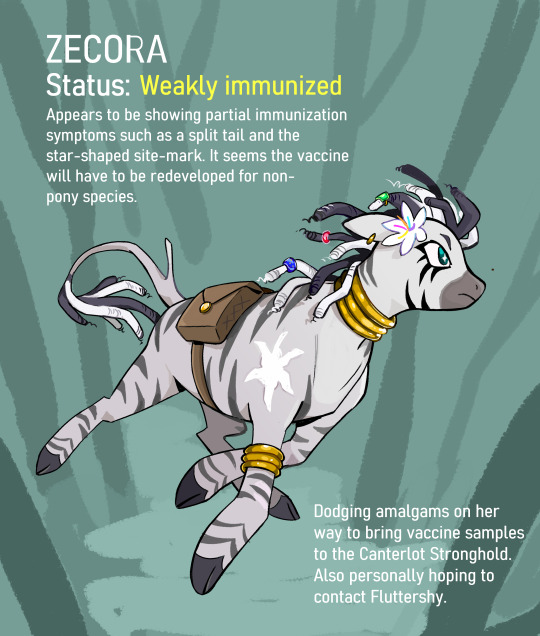
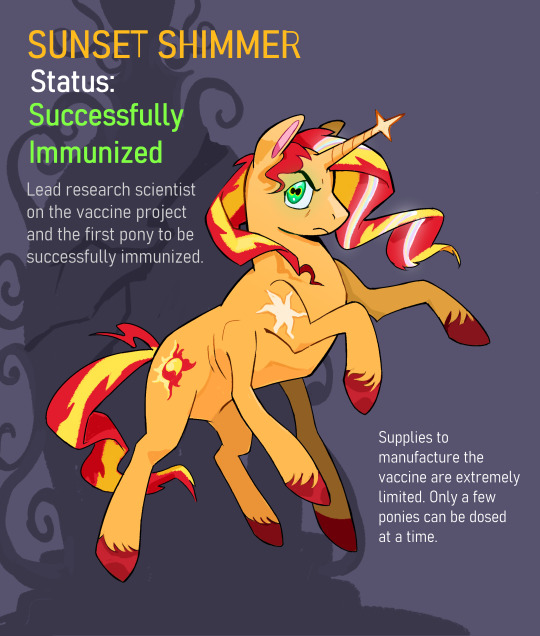



Part 4/5 of my MLP Infection AU!!
This was the part I was most excited for, I literally drew this whole thing just to explain my fan pony species lol
#mlp#mlp infection au#my little pony#mlp horror#mlp fim#sunset shimmer#zecora#This whole time I was like I have to get through this. to draw MONSTER PONIES#Sleigh ponies can have anywhere from 4-8 legs#Also can have doubled ears and double or even triple tails#They also have the split pupils and a rainbow hair streak#Unicorns can get split horns and pegasi (or alicorns) can get multiple wings#be rough if you end up with an uneven number. LOL#No rougher than eating meat for the rest of your life when you were previously a grass-eating horse though#I tried coming up w cool name for the vaccine so its HPE as in “Hope”
3K notes
·
View notes
Text
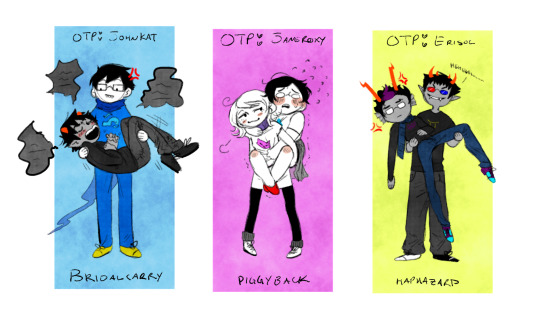
mt OTPs dynamics visualized by how they handle carrying each other
#homestuck#johnkat#john egbert#karkat vantas#janeroxy#jane crocker#roxy lalonde#erisol#eridan ampora#sollux captor#raccoon doodles#//me triple checking to make sure eveyone who has horns indeed has horns
189 notes
·
View notes
Text
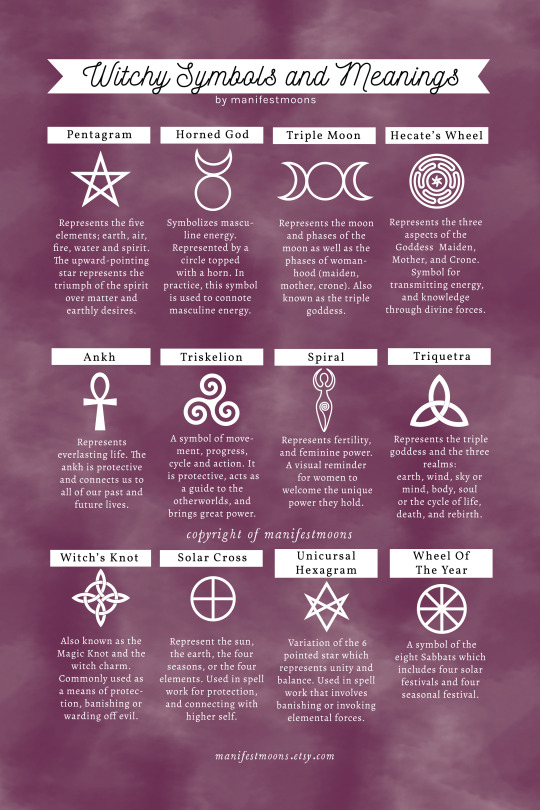
Welcome to manifestmoons :)
I'm sharing some basic symbols and meanings associated with the practice of witchcraft. There are 12 of them. One step at a time, baby witches!
More info on manifestmoons
#grimoire#pentagram#witch's knot#triple goddess#horned god#witchcraft basics#paganism#witchblr#witches of tumblr#book of shadows#witch art#witch community#witchcraft#manifestmoons#grimoire ideas#witchcraft for beginners#pagans of tumblr
2K notes
·
View notes
Text

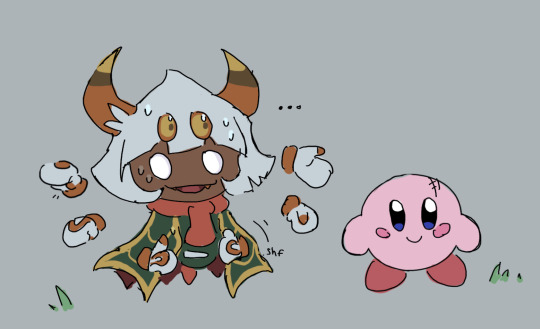

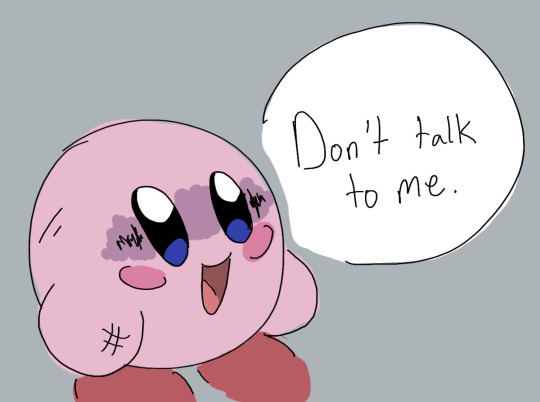
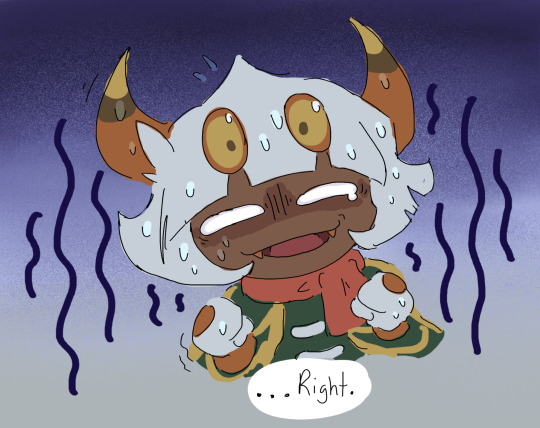
I finished Kirby Triple Deluxe
#kirby triple deluxe#taranza#kirby#quikyu artiste#Mischaracterization warning lol I apologize for making Kirby such an ass#Speaking of mischaracterization Taranza did NOT act how i thought he was going to act. He started speaking proper english & my eyes boggled#But it’s okay i still think he is very very adorable I love him#ALSO… THEY’RE NOT HORNS… THEY’RE PINCERS… HORNAT HOLOW KNIGHT LEVELS OF BUG IN DISGUISE#I’m probably going to have to 100 percent the game in order to get some better ending or secret or whatever but i’m such a noob#Anyways. Was an alright game. Wish they didn’t do that exposition dump all at the end#but other than that the only other qualms i had was concerning me not being a gamer Lol#This game was probably way harder than it should’ve been XD
309 notes
·
View notes
Text
kanaya says she's 5'8 and everyone believes her because before sgrub sure they can send selfies but they can't really tell how tall everyone is, besides she has Tall Energy so it makes sense but then they all meet up in person and she's actually 5'3 and her horns are 5 inches tall
#she thinks that horns should count towards your height#not because she has any strong desire to Be Tall but because this is just what makes the most sense to her#by the way i triple checked to make sure i was doing the math correctly for this. i don't trust myself with height addition anymore#spreading short kanaya propaganda
205 notes
·
View notes
Text
My peaceful witch years are over time to start hexing bitches.
#pagan#witch#nature#funny#idk#pagan witch#witchcraft#curses and hexes#hexes#triple goddess#the horned god#hellenic polytheism#celtic polytheism#greek polytheism#norse polytheism#polytheist#hellenic polythiest#pagan polytheism
55 notes
·
View notes
Text
20. Freckles
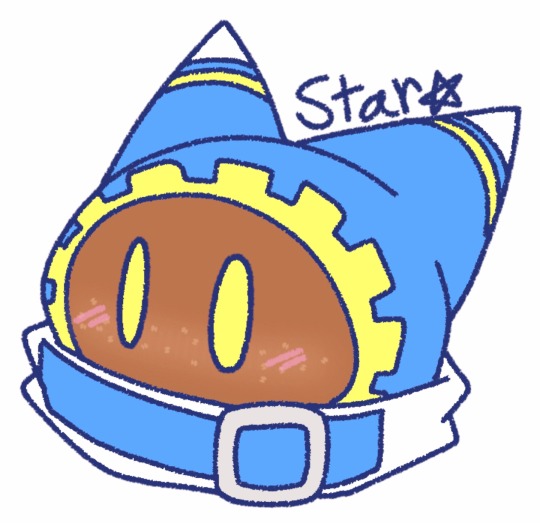
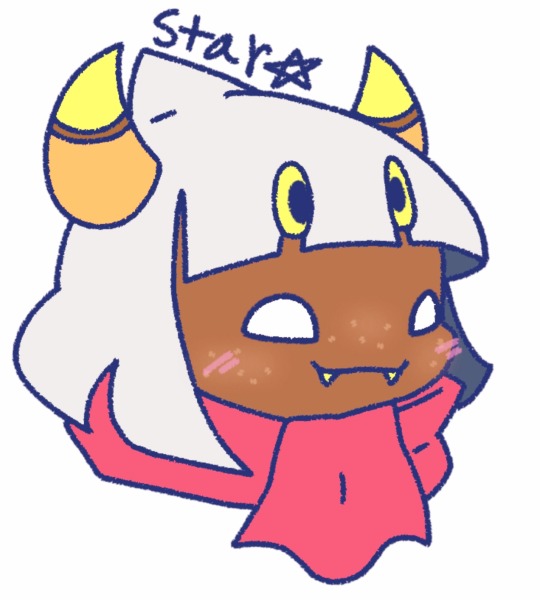
Unfiltered:


Someone said that they liked taranza and magolor having freckles
#kirby#magolor#taranza#magoranza#kirby triple deluxe#taranzalor#taranzolor#krtdl#I cant draw freckles ;)#I FORGOT THE HOLES IN RANZS HORNS
77 notes
·
View notes
Text

5 - Kirby Triple Deluxe
#he was so sad he lost his horns in the end :(#kirby#kirby series#kirby triple deluxe#taranza#queen sectonia#king dedede#comic#twok#the world of kirby
46 notes
·
View notes
Text
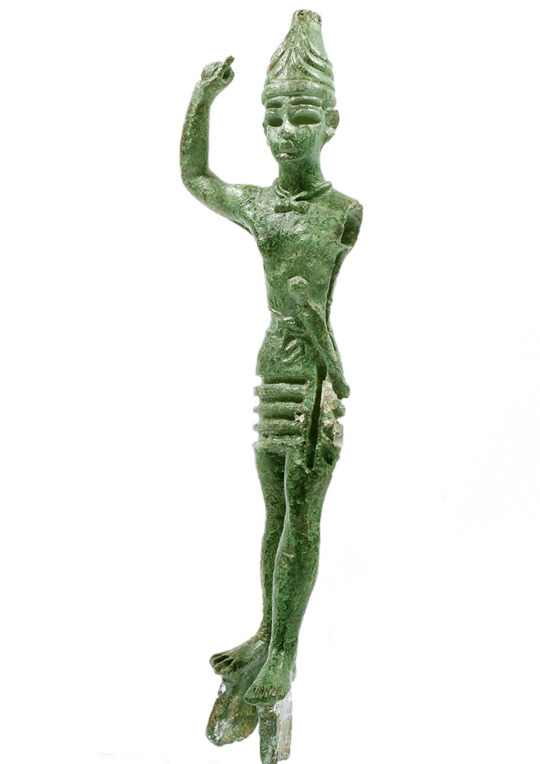
Figurine of god Reshef (ca. 1900 – 1600 BC)
Obelisks Temple in Byblos, Lebanon
Source: The American University of Beirut
#resheph#rashpu#rashapu#byblos#menacing god#horned crown#triple horned crown#canaan#canaanite gods#phoenicia#phoenician gods#aram#aramean gods#syria#syrian gods#levantine gods#mesopotamia#mesopotamian gods#pagan gods#polytheism#archeology#magic#witchcraft#witchblr#paganblr#occult
70 notes
·
View notes
Text


Just made pictures for my Altar - the Triple Moon Goddess and the Solar Horned God. I didn’t wanted to buy altar figures so I made images of the gods by myself. I feel closer to the slavic tradition, so I gave them pagan slavic vibe
22 notes
·
View notes
Text

Follow up to my last [and first] Taranza drawing, he is now actively drinking
[I think im getting the hang of drawing said spider guy, which is good, because hes cute and i like drawing stuff]
[Also i made a post earlier about wanting to draw people kirby's ocs if anyone is interested] {🧍♂️}
{Three uploads in a day? Sure why not}

#art#kirby#fanart#kirby art#kirby of the stars#taranza#kirby taranza#tea#he drinks tea#kirby series#i cringe too much at myself i should stop its annoying#pastel#i like drawing his horns for some reason#did i mention i finished triple deluxes main story#tho i still like planet robobot better#planet robobot is like one of the best kirby game ever
23 notes
·
View notes
Text
youtube

Little fucker literally moves too fast for me to just screenshot it, but.
#skaven ass behavior#storm crow#“narato.png”#I will never recover from reading that he made a rare actual public appearance in Skavenblight#JUST to mug-threaten Thanquol#Fuck That Rat In Particular#But also full plate plot armor#Thanquol is the Great Horned Rat's Fursona/GM PC/Self Insert Mary Sue#Meanwhile Snikch is just FUCKING CREEPY WHY DOES HE USE WE INSTEAD OF I OR HIS NAME?!#Personally I think he's the creepiest sounding of the Skaven VA in TW#Holy shit watching the triple blades come out though#Totally get why that one reviewer called it “Balletic Bloodshed”#(One-of-Us... One-of-Us...)#(I'm procrastinating can you tell)#Youtube
14 notes
·
View notes
Text

Greetings from Manifestmoons!
Start a bedtime ritual for better sleep and dream. Have you ever experienced recurring dreams? Full guide on dream interpretation in manifestmoons
#dream meaning#dream interpretation#grimoire#pentagram#witch's knot#triple goddess#horned god#witchcraft basics#paganism#witchblr#witches of tumblr#book of shadows#witch art#witch community#magick#beginner witch#witchcore#witchyvibes#pagans of tumblr#pagan witch#manifestmoons#dream#witch aesthetic
497 notes
·
View notes
Text
he might be tailless and mostly hornless, but he's still one of the very few oryx to successfully scare off a gnu
source: NamibiaCam
#what he lacks in horns he makes up for with a triple dose of oryx attitude lol#animals#antelopes#oryx#gemsbok#gnu#wildebeest#blue wildebeest
5 notes
·
View notes
Text

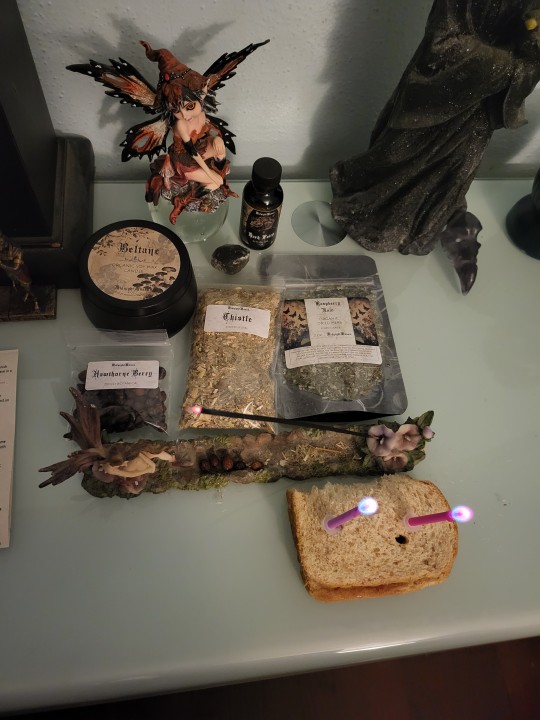
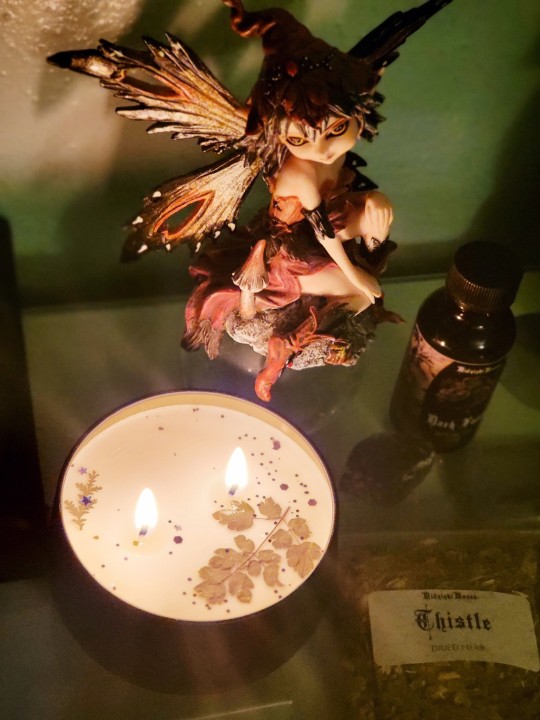
My Fairy/Fey alter for Beltane. My Dieties,Demons and I had fun 😈💋
Now there's a thunderstorm and I'm collecting storm water. 🌩💧🔥
#beltane#personal#fairy aesthetic#the fae#djinn#asmodeus#demon spouse#patron#cernunnos#the horned one#pixies#alter#norse gods#celtic#pagan gods#hecate#triple goddess#lilith
11 notes
·
View notes
Text
Green spring: The Wiccan deities
THE WICCAN DEITIES
Category: Wicca
Wicca is without a doubt the first name that pops up when people speak of things such as “neo-paganism”, “new religion of the 20th century” or “modern witchcraft”. Wicca however is actually a very broad and large term that covers as much a religious movement as a school of esoteric and occultism, mixing a lot of different influences both ancient and modern, and just like any religion it covers a wide set of different branches, sects, interpretations and sub-types of “Wicca practice”. There are many different forms of “Wicca”, but they all at least agree on one point: there is a duo of deities that is at the central of the Wicca worship.
I) The divine couple
Wicca started out as a duotheistic religion, centered around two deities: the Goddess and the God, also known as the Lady and the Lord. I say “started out” because, as said previously, Wicca is a true religion with many different conflicting branches and traditions. Almost all of them however have this duotheistic focus on the Lord and the Lady – however it can range from a theist point of view worshipping the divine couple as literal gods, existing powers in the world ; to more atheist interpretations that rather interpret the God and the Goddess as symbols and archetypes, not as actual beings.
However a certain branch of Wicca (which with time seems to have grown in size, presence and influence) rejects a pure duotheism to rather embrace a form of henotheism – a refusal to deny or refute the existence of other deities. This form of Wicca decides to “include” or at least make “contact” with other mythologies and religions by considering that all the goddesses are actually just facets, aspects or incarnations of the Wiccan Goddess, the same way that all gods are just alternate names and identities of the Wiccan God. As a result you will have numerous Wiccans who consider that Kali from Hinduism, Eostre from Germanic mythology and the Catholic Virgin Mary are just different faces of their Goddess ; and others who will explain to you how and why Dionysos of the Greek myths, Cernunnos of the Celtic religion and the Judeo-christian Yahweh are all one and same God. Gardner himself (see below) compared the two to the duo of Isis and Osiris in Egyptian mythology. This is notably why the Wiccans adopted the denomination “Great God” and “Great Goddess”, to differentiate their deities from the “smaller” or “lesser “deities, which are just fragments of the “great” ones – others prefer the term “Universal Goddess” and “Universal God”.
There is also an actual current of polytheism among the Wicca branches, a small category of Wiccans deciding that yes, the other “lesser” gods do actually exist, even though they are all just “under” the main two deities – or all born/manifested out of the divine couple. This can even range into a fully animistic views, but that’s another topic.
The God and the Goddess embody a fundamental dualism: he is the masculinity, the force and the sun, where she is the femininity, the form and the moon. Their interactions are what made the world, nature is born out of the balance between them, and to understand the universe one must understand their union. The deities are manifested in the Wiccan religion by a High Priest and a High Priestess.
A last important part of the Wicca belief is the idea of the “manifestation” of the deities. Wiccans believe that the God and the Goddess, be them actual deities or psychological archetypes, can actually “manifest” to people in various ways – and while some believe in actual physical manifestations, others rather believe more in manifestations through dreams, or through the possession of Wiccan priesthood.
II) The Great Goddess
When it comes to the Wiccan deities, the most common name/appearance/characterization of the Wiccan goddess is “The Triple Goddess”. However it wasn’t how she started out…
You see, Wicca was formed and influenced in its early days by many early 20th century/late 19th century researches about prehistorical religion, and the “truth” behind the “witch-cults” of Europe. And the thoughts of people such as Margaret Murray or Gerald Gardner was that in the Stone Age, people worshipped a primordial duo of deities known as the Horned God and the Mother Goddess – a simple worship that was replaced by the most complex ones of Antiquity, but that still survived in Europe under rural cults that were considered to be “witches” by the Christian church and persecuted as such. It was these “primordial deities”, considered to be the “tribal deities of the British Isles”, that Wicca tried to re-include, rehabilitate and restore in their religion, and so the Goddess original form was the one of the Mother Goddess, a deity of life and fertility with a particular focus on springtime, an “ideal of feminity” who was the goddess of the “gatherers” of the hunter-gathered duo of the Stone Age, and the feminine power worshipped by “witches”. Gerald Gardner, who was the man that established the Wiccan core tradition and made the movement public in the 50s, claimed that the true names of the deities had to be kept secret – before an “leak” revealed that the rites of the Gardnerian tradition worshipped the goddess under the name “Aradia”. This promptly led the name of the deities to be changed, in order to keep the secret. According to Gardnerian Wicca, the Mother Goddess, also called the Great Mother, is the one who offers love to the living, and regeneration/rebirth to the dead – she is simultaneously the Eternal Virgin and the Primordial Enchantress, and she is connected to the moon, the stars and the sea. In other mythologies and religions she is known as Brigit, Hecate, Diana or Gaea, and she is said to “conceive and contain” all life within her – which is why Wiccans held life itself to be sacred, and consider all living beings to be divine. As a Moon goddess, she is also considered to be the goddess of menstruation.
However, this original characterization of the “Mother Goddess” promptly got fused/replaced by another “identity” that is the most famous one today: the identity of the Triple Goddess. A goddess that manifests as a trinity identified as Maiden, the Mother and the Crone, representing respectively virginity, fertility and wisdom (though the Gardnerian influence still kept the “Mother” facet the most important and prominent of the three). On top of representing the three “ages” of the “female life”, the three “faces” of this Goddess also represents the three aspects of the Moon: the Maiden is the waxing moon, the Mother is the full moon and the Crone is the waning moon. This triple nature also allows the Goddess to rule over the three realms of the world: heavens, earth and the underworld. Through the three processes of sexuality, pregnancy and breastfeeding the women “embody” the Goddess or make their own bodies sacred to her. The Triple Goddess is a force of change and a symbol of self-transformation. The Maiden embodies birth and youth, enchantment and beginnings, inception and expansion ; the Mother is sexuality and stability, power and life, ripeness and fulfilment; as for the Crone, she is repose, death and endings.
The concept of the Triple Goddess doesn’t actually originates from Wicca, but from other writings of the early 20th century. Most notorious and influential of them being Robert Graves’ works, his two books “The White Goddess” and “The Greek Myths”, which proposed a personal and “poetic” re-reading and re-interpretation of the Greek myths, in the light/in comparison with Celtic myths, leading notably to the creation of a reconstructed divine figure, the “Triple Goddess”. This poetic and literary theory was taken back by other figures of myth studies and comparative mythology, such as Jane Ellen Harrison, Marija Gimbutas or Karl Kerenyi, defending the concept of a Triple Moon Goddess worshipped by early European cultures and that manifested the most clearly in Greek mythology. Indeed most of the “manifestations” and “proofs” of the Triple Goddess come from Greek mythology: the Charites (Graces), the Horae (Seasons), the Moirai (Fates), the goddess Hecate (a triple-deity), the trinity of Demeter/Persephone/Hecate, but also a local cult of Hera as “Girl, Adult woman and Widow”… Though the construction of the Triple Goddess also included non-Greek elements, such as the Hindu Tridevi. Of course this was a very controversial take and idea, that based itself primarily on poetic systems and literary evidence while being contested by more cultural/historical/archeological elements, but it was nonetheless a concept popular and influential enough to reach both Carl Jung (who made it one of his famous “Jungian archetypes”) and the Wiccans.
III) The Great God
As said above, according to the theory of the “Stone Age duo”, the Wiccan Lord was (and is still) most widely and commonly interpreted as the Horned God, worshipped by the hunters of the hunter-gatherer duo, and who was the so called “dark goat/devil” worshipped by the cults persecuted during the witch trials. And unlike the Mother Goddess, who got replaced by the Triple Goddess, the Horned God stuck around and didn’t change much.
He is the perfect complement of the Mother Goddess: he is the god of nature and death, an “ideal of masculinity” with a particular focus on animals. He is the Garnerian god of hunting and magic, connected to the sun and the forests, who rules over the paradise known as the “Summerlands”. He is a force of sexuality, wilderness and life cycles who is usually depicted as a man with horns or antlers, embodying the “union of the animal and the divine” and carrying the souls of the dead away from the world of the living.
The Horned God’s correspondence in other pantheons include Cernunnos (Gaul), Lugh (Irish), Herne the Hunter (English), Pan (Greek), Faunus (Roman), Brân (Welsh), Wayland the Smith (Germanic), Tubal-cain (Biblical) and Pashupati (Indian). In fact, Cernunnos was the initial “secret name” of the Lord, just like “Aradia” was for the Lady, before its public revelation led to the keepers of the Gardnerian tradition to change his secret appellation. Other used and known name for the God are mostly deformations of “Cernunnos”: Kernunno, Janicot, Karnayna, Atho… The Horned God is also recognized by Wiccans as being the Leader of the Wild Hunt (often said to take place at Imbolc, 1st of February), which he leads as the “Lord of Death and Resurrection”.
The most common consideration among Wiccans is that where the Goddess is triple, the God is double: he has a “dark” and a “bright” faces representing the duality of nature – night and day, summer and winter. Alongside the three faces of the Goddess, the two faces of the God makes the Wiccan Pentagram, and Wiccans associate it with the folkloric figures known as The Holly King and the Oak King, male seasonal embodiments said to each rule over a different part of the year (the hot and sunny part of the Oak King, the cold and dark part for the Holly King). A lesser tradition rather considers that the God should be equal to the Goddess and thus have also three faces representing the “ages” of a man’s life – these Wiccans worship the God as the Youth (or the Warrior), the Father and the Sage.
The Lord is at the same time the lover and the child of the Goddess, the “spark of life and inspiration” within her (which is why alternate titles and identities to “The Horned God” are “The Son God”, “The Lover God” or the “Divine Child”, associated with the worship of the Christ Child). It is said that the Lord follows a seasonal life centered around the Goddess, according to the series of festivals and holidays known by the Wiccans as “The Wheel of the Year”. The Lord is born in winter out of the Goddess, grows in spring, becomes the lover of the Goddess in summer, and after impregnating her dies in autumn, before being reborn the next winter. That being said, the exact dates of each of the God’s life-events are up to debate: for example Wiccans debate whether the God dies on Lammas (August 1st), on Mabon (the autumn equinox) or in Samhain (October 31st).
A last debate about the God is about the… let’s say “alternate identities”. You see, the idea of the God/the Lord being identified as the Horned God isn’t favored by all. Some Wiccans will drop other names. The Divine Child or the Sacrificial God have been talked about before, but two identities notably stood out from the others: The Vegetation God, tied to the Oak King/Holly King duality and representing a Wiccan appropriation of the Green Man figure; and the Sun God, considered to the at the center of the Wiccan holiday of Lughnasadh/Lammas. And while some people consider these identities to be just alternate names/faces of the Horned God (who is associated with the sun and the forests), others argue that these might be distinct deities… And this range from people talking of them as separate male gods existing alongside the Horned God, to either the Green Man or the Sun God being actually the “true” Lord/Great God, not the Horned God. But usually, it results in the three figures being mixed together (it isn’t uncommon to see Wiccan imagery have a Green Man with antlers or a Horned God crowned with sunrays).
- - - - - -
While I said the Wiccan religion became more and more polytheistic as time went on, another side of the Wiccan religion also became more and more monotheistic as time went on. This is notably due to one of Gardner’s original stance, which made the Wiccan religion slightly agnostic: he was certain that beyond the two Wiccan deities existed a Supreme Deity, or Prime Mover, which was too complex for humans to understand. Gardner claimed it was a divinity in a purely deistic form, and that had created the “Under-Gods”, such as the Lady and the Lord, but who hadn’t done anything to the world (isn’t ruling it, didn’t create it, just created the “Under-Gods”).
This interpretation was also popularized among Wiccans under a more pantheistic perception, some claiming that the God and the Goddess were actually the two faces of one same being, the same way all the “lesser gods” were just aspects of the Lord and the Lady, making it so that all the gods and goddesses are one deity ; other rather invoking “The One” as being more of a great impersonal force from which the Lord and the Lady manifested.
Now, Gardner deeply hated and criticized monotheism (he notably invoked the “problem of evil” as one of the biggest ways to break down monotheistic religions), and yet in the 60s and 70s a strong monotheistic current formed itself among Wiccans. A monotheism focused over the Goddess, and rejecting the existence of the Lord or any “supreme entity” beyond the Lady. To talk about a precise example, the most commonly accused is the “Dianic Wicca” branch, a group of Wiccans who formed in the 70s as an all-female cult, centered entirely around feminine experience and female power, and who only considers one Goddess and no other deity (this branch is heavily influenced by the book “Aradia, or the Gospel of Witches” and keeps its traditions that the “witches” of Europe were part of an all-female cult and secret matriarchal society worshipping a goddess who was at the same time Aradia, Diana, Aphrodite and Herodias). Dianic Wiccans are very different from “traditional” Wiccans, and in fact many of the “traditional” Wiccans actively criticized and rejected the Dianic Wiccans by accusing them of merely being “Christianity reversed”, replacing all the “Him” and “His” by “Her” and “Hers”.
But the Dianic Wicca itself is actually part of a much wider movement of neo-paganism of the second half of the 20th century commonly referred today as the “Goddess movement”, a huge wave of different Neopaganism cults, beliefs and philosophies that rejected dominant masculinity and the patriarchal mindset.
As a departing thought: while the idea of the Triple Goddess as “Maiden/Mother/Crone” as adopted and popularized by Wiccans is the iconic iteration of this trinity, in the books that started it all, Robert Graves’ books, the identities of the Triple Goddess as much less clear cut… As I said before, these books proposed a “poetic” reinterpretation and reading of the Greco-Celtic myths, Graves himself being a poet. He firmly opposed the “scholarly” readings and analysis of the myths, claiming them to be too much “prose”, and rather wanted to return to the “poetry” of the Greek texts… But poetry being poetry, Graves never had anything set in stone. He laid out three different “trinities” that could represent the Triple Goddess. One is the iconic Maiden/Mother/Crone, but another focused on the woman’s sexuality towards the man is “Maiden/Nymph/Hag”, and a third one centered around the role of a woman in a man’s life is “Mother/Bride/Layer-out”. He also evoked the moon goddess as manifesting through the Maiden (New Moon), Nymph (Full Moon) and Mother (Old Moon)… He even complexified the system as a “three-in-three” deity at some points, claiming that the Goddess manifested as the goddess of the underworld, the goddess of the earth and the goddess of the heavens, each with its own three sub-faces: the goddess of the heavens is the New, Full and Waning moon ; the goddess of the earth is Spring, Summer and Winter ; the goddess of the underworld is Birth, Procreation and Death. I mention that because many non-Wiccan neo-pagans grew dissatisfied with the idea of the Triple Goddess, thinking the Maiden/Mother/Crone concept to be stereotypical, reductive or even offensive, and returning to Graves’ books and writings to find more suitable “aspects” or “faces” of the Goddess.
16 notes
·
View notes